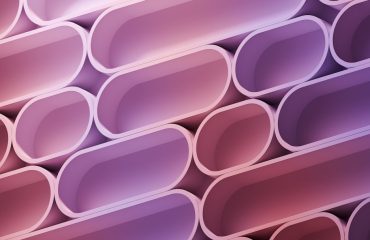The pursuit of zero-defect production is a noble goal, often perceived as an unattainable ideal. However, while achieving absolute perfection might be elusive, striving for it significantly improves product quality, reduces waste, and enhances customer satisfaction. This blog post delves into the strategies and methodologies required to effectively pursue zero-defect production goals.
Understanding the Zero-Defect Philosophy
Zero-defect manufacturing isn’t about eliminating every single imperfection. Instead, it’s a mindset – a commitment to continuous improvement and a relentless pursuit of minimizing defects to a level that’s virtually undetectable to the end-user. It’s about building a culture of quality where every employee takes ownership of the quality of their work and actively contributes to defect prevention. This philosophy requires a holistic approach, integrating quality considerations into every stage of the production process, from design and procurement to manufacturing and delivery.
This shift from reactive quality control (finding and fixing defects after they occur) to proactive defect prevention is crucial. It emphasizes identifying and eliminating the root causes of defects before they even arise. This proactive approach leads to significant cost savings in the long run by reducing rework, scrap, and warranty claims.
Implementing Robust Quality Control Systems
A robust quality control system is the backbone of any zero-defect initiative. This goes beyond simple inspection at the end of the production line. Effective quality control necessitates implementing a multi-layered approach that incorporates:
- Statistical Process Control (SPC): SPC uses statistical methods to monitor and control processes, identifying variations and preventing defects before they become widespread.
- Total Quality Management (TQM): TQM is a holistic approach that integrates quality into every aspect of the organization, fostering a culture of continuous improvement and employee empowerment.
- Six Sigma Methodology: Six Sigma is a data-driven methodology that aims to reduce variation and improve process capability, leading to a significant reduction in defects.
- Regular Audits and Inspections: Regular audits and inspections at various stages of the production process help identify potential problems early on and prevent them from escalating.
The choice of specific quality control tools will depend on the nature of the production process and the type of defects being addressed. However, the overarching principle remains the same: proactive identification and prevention of defects.
Investing in Employee Training and Empowerment
Employees are the heart of any production process, and their skills and commitment are crucial for achieving zero-defect goals. Investing in comprehensive training programs that focus on quality awareness, process understanding, and problem-solving skills is paramount. This training should not be a one-time event, but an ongoing process of continuous learning and development.
Furthermore, empowering employees to take ownership of quality is essential. This means giving them the authority and resources to identify and address quality issues without excessive layers of bureaucracy. Creating a culture of open communication and feedback is vital for encouraging employees to report potential problems and contribute to solutions.
Leveraging Technology for Enhanced Quality
Technology plays a significant role in achieving zero-defect production goals. Automation, robotics, and advanced data analytics can significantly improve process consistency and reduce human error. Examples include:
- Automated Inspection Systems: These systems can quickly and accurately detect defects, often with greater precision than human inspectors.
- Predictive Maintenance: Using data analytics to predict equipment failures and schedule maintenance proactively prevents production downtime and reduces the likelihood of defects.
- Real-time Data Monitoring: Monitoring key process parameters in real-time allows for immediate intervention if deviations from established norms are detected.
- Advanced Quality Management Software: Software solutions can streamline quality control processes, track defects, and provide valuable insights for continuous improvement.
The integration of technology should be carefully planned and implemented to ensure seamless integration with existing systems and processes.
Continuous Improvement and Kaizen Culture
Achieving zero-defect production is not a destination but a journey. Continuous improvement should be embedded in the company’s culture. The Kaizen philosophy, which emphasizes incremental improvements and continuous learning, is particularly well-suited for this purpose. Regularly reviewing processes, identifying areas for improvement, and implementing changes based on data and feedback is crucial for maintaining momentum and achieving ongoing progress.
This involves fostering a culture where employees are encouraged to suggest improvements, and where feedback is actively solicited and incorporated into decision-making. Regular brainstorming sessions, process mapping, and root cause analysis can all contribute to identifying areas for improvement and driving continuous progress towards the zero-defect goal.
In conclusion, while achieving perfect zero-defect production might be theoretically impossible, the pursuit of it drives significant improvements in quality, efficiency, and customer satisfaction. By implementing robust quality control systems, investing in employee training, leveraging technology, and fostering a culture of continuous improvement, businesses can significantly reduce defects and move closer to their zero-defect goals.
Tags: zero-defect production, quality control, lean manufacturing, six sigma, kaizen




